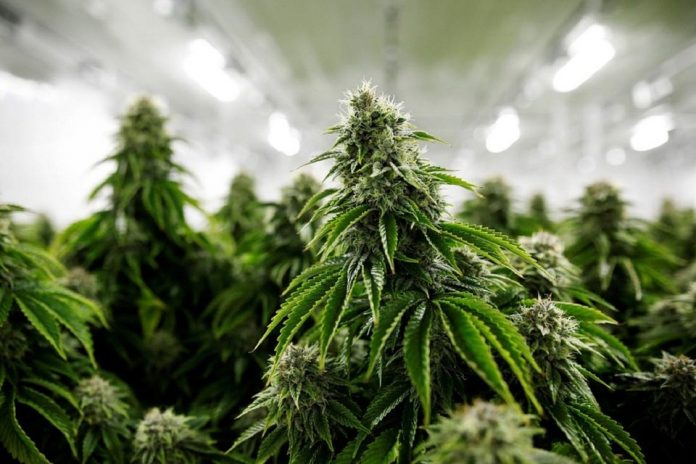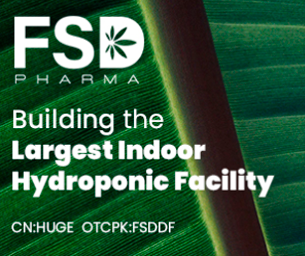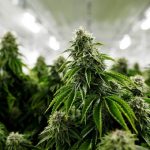U.S, July 12, 2021 (ANALYTICALCANNABIS) With cannabis cultivation operating underground throughout much of the 20th century, the species lost a significant amount of genetic diversity. Just like with alcohol prohibition during the 1920s, cannabis prohibition served to push THC levels upward to the exclusion of other traits.
Look at the explosion of taste and body profiles on beer, wine, and tequila shelves – flavor notes, in particular subtle flavor notes, have become the key drivers of product differentiation and exponential sector growth. The alcohol industry continues to get more and more sophisticated post prohibition. And in order to keep consumers interested, it will continue to do so in the future.
With cannabis, the initial goal was to get more THC into less flower because it made sense for black market distribution. Closets were small grow rooms and more THC per square foot was more valuable. Similarly, bootleggers converted bathtubs to moonshine stills and their focus was solely on driving up alcohol content. It was a balancing act to make the risk worth the reward.
But growing illegally for so many years forced bottlenecks to emerge in the cannabis genome and heterozygosity in the seed industry. The problem with this approach was that breeders did not take time to isolate traits and create parental lines. The result was plants that were selected to produce high-THC cannabinoid profiles and not to improve the end user’s experience. THC-only products can not only be harmful to one’s health, but can also inflame underlying conditions like anxiety, paranoia, schizophrenia, and others.
Tastier, safer, and more effective cannabis is here
The premise for improving the user experience was simple: have fun, even at full speed, but without any of the baggage often present when THC levels are increased to the exclusion of other compounds. Flavor, aroma, and experience had to be fantastic. By analogy, most cannabis is a single note, so we set out to write a symphony within a single plant. This was a formidable task, but creating new and unique chemistries is never easy.
The result was a set of hybrids that contained a spectrum of ratios of THC to CBD, as well as a rainbow of terpene bouquets that gave rise to unique aromas, as well as aromas that were indistinguishable from the marketplace’s favorite “THC-only” cultivars. Four out of five consumers preferred flowers containing some CBD and the testimonials claimed no adverse events such as paranoia or anxiety.
Interestingly, the parental lines used to create these hybrids were THC-only and CBD-only (hemp) cultivars with conserved terpene profiles across all cannabinoid profiles.
The bigger picture outcome was a toolkit that is a cannabinoid researcher’s dream! It’s magic when you have a series of plants that all have the same flavor and aroma but contain different cannabinoid profiles. This kind of plant library exponentially expands the possibilities for clinical research into the effects of cannabinoids, and more importantly, the entourage effect.
Targeting to the research of the entourage effect
Pain relief is the most often cited therapeutic reason people turn to cannabis and inflammation is the most common source of pain, so we set out to design a cannabis plant that contained a combination of cannabinoids in the plant specifically tailored to address inflammation. CBD has been reported to exhibit anti-inflammatory properties, but only in impractically large doses. This creates a disconnect between consumer expectations from the ubiquitous CBD-mania and objective results when used.
The initial chemical combinations were based on the literature and the goal was to couple CBD with other natural products to increase the anti-inflammatory properties via a synergistic effect (aka, the entourage effect). The entourage effect has become a marketing trope for many across the industry, but is rarely put to the test in an objective or quantifiable manner.
Β-caryophyllene (BCP), a lesser-known cannabinoid and sesquiterpene, demonstrates anti-inflammatory properties in the absence of CBD. This was a key fact that drove the investigation of BCP combined with CBD.
An in-vitro inflammatory model using bacterial lipopolysaccharides (LPSs) in murine macrophages was used to move the investigative research forward. The anti-inflammatory effects of the compounds were assessed by measuring their ability to prevent the action of LPSs to upregulate the synthesis of key pro-inflammatory cytokines. Baseline data were collected for each compound individually and then approximately 100 ratios were tested by varying the concentration of each. Remarkably, and completely unpredictably, patterns showing unique anti-inflammatory effects at unexpected ratios of CBD and BCP were identified in the data.
Guided by the lab results, our attention was turned to using marker-assisted breeding to produce whole plants with these targeted CBD to BCP ratios. Multiple plant generations later, the breeding techniques yielded stable plant genetics with the ratios of CBD to BCP mirroring those identified in the laboratory assays as uniquely synergistic – those that demonstrated a true and quantifiable entourage effect.
With those genetics in hand, we then began targeting different THC levels to go along with the special CBD:BCP ratios. THC’s ability to interfere with the brain’s ability to recognize pain, combined with ratios of other plant compounds mirroring cellular data collected from rapid screening laboratory assays, reflects a cannabis chemovar tailored for pain reduction.
A sophisticated approach to chemovar development
Cannabis is a generic term that describes a broad category of plant material; it does not refer to a plant with specific characteristics.
Through agricultural science, cannabis must be tailored to meet specific needs. The industry is losing customers who experiment with cannabis but do not use a plant that is tailored for their desired outcome. If we, as an industry, begin breeding and selling plants based on desired outcomes rather than simply on THC levels or flavor, everyone wins.
Better cannabis is a product that first meets the needs of users, whether that is pain relief or simple relaxation without side effects. Taste is still a critical component for cannabis users so we can’t discount the importance of breeding plants that offer a combination of smoothness and nuanced flavor complexity. And finally, this approach to growing better cannabis will give consumers access to safer products that are less prone to cause adverse events.
We’ve only just begun to mine the treasure trove buried within the cannabis genome, yet taking a novel approach to breeding is revealing both game changing opportunities and continued mysteries we continue to seek to understand. Our ongoing work to develop new cannabis chemovars, driven by data, is applicable across the sector. A targeted approach to breeding cannabis can improve enjoyment, medicinal efficacy, and safety. Again, this isn’t cannabis science fiction, it’s working smarter, not harder, to create better and more diverse cannabis chemovars.
Biotech Institute and its partner Napro Research work to support the research and development of plant-based therapeutics and related technologies through cannabinoid genetics. Their targeted breeding program provides patented and award-winning chemovars to farmers and others interested in advancing the market.
Planta Medica recently provided free access to Napro’s “Pharmacological Foundations of Cannabis Chemovars” paper that was co-authored with Dr Ethan Russo that highlights examples of Napro’s breeding accomplishments which serve as a critical foundation for further research.
Fuente: https://www.analyticalcannabis.com/articles/craft-cannabis-the-value-of-targeted-breeding-313193







